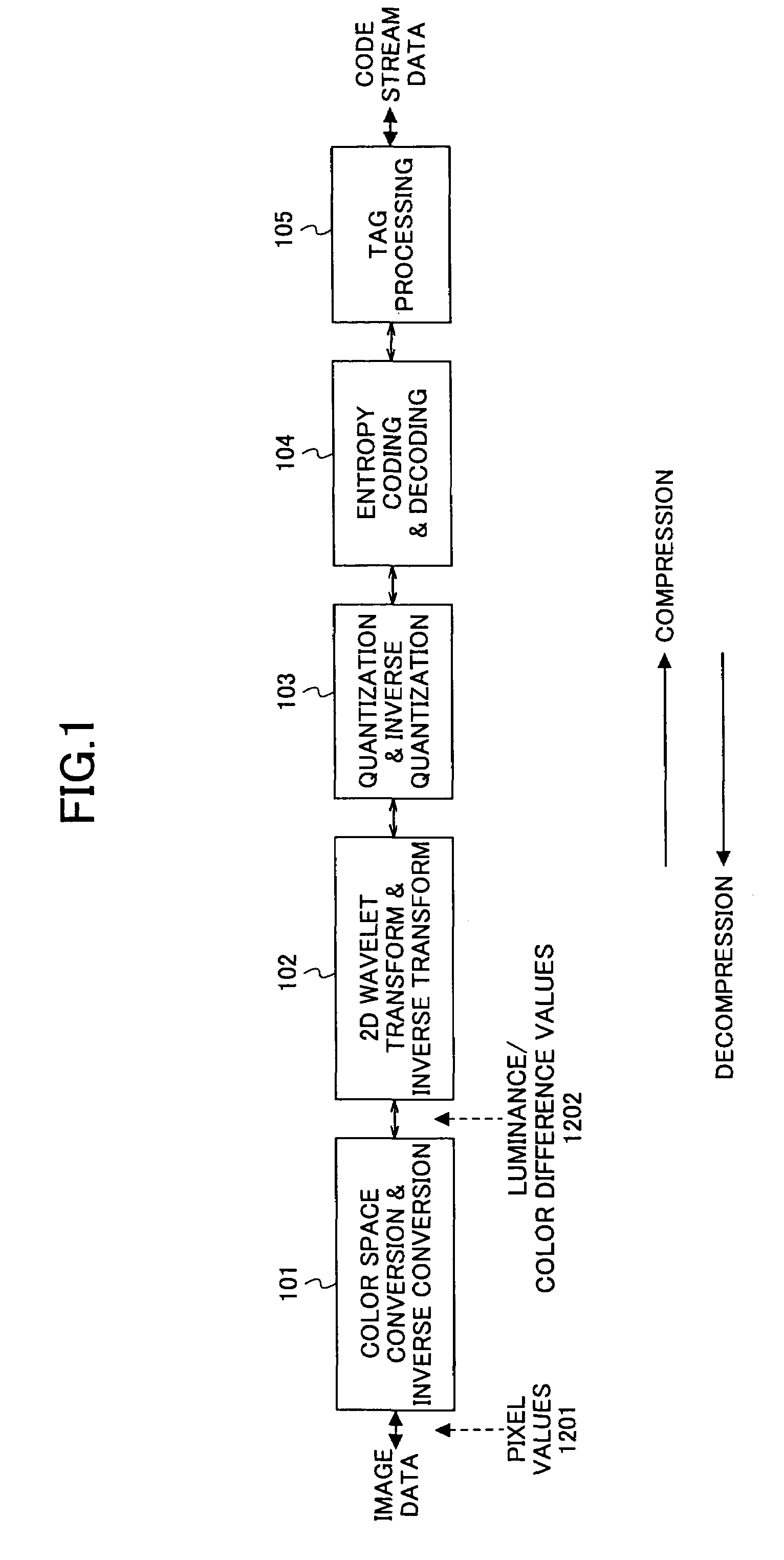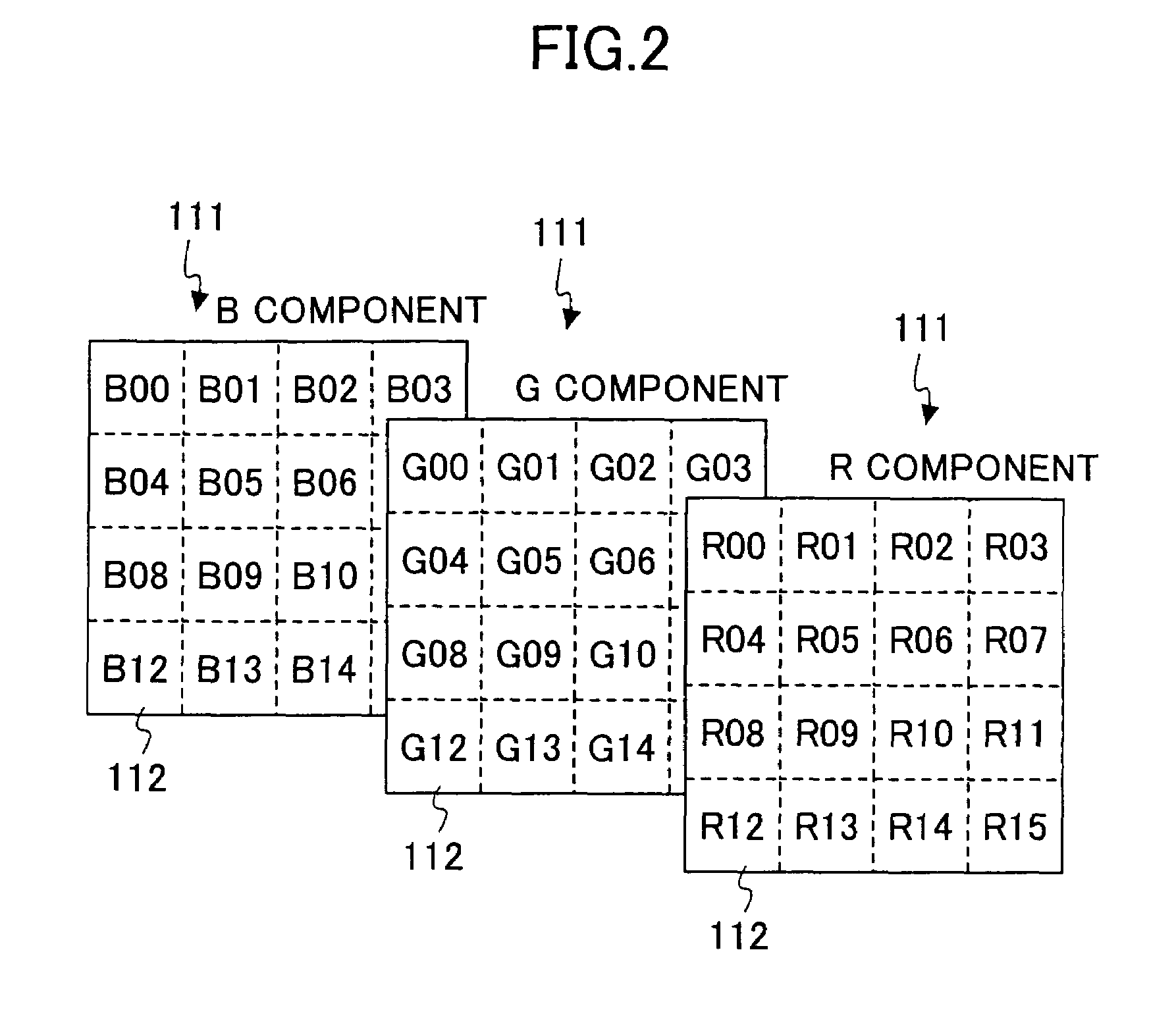Image decoding technique for suppressing tile boundary distortion
- Summary
- Abstract
- Description
- Claims
- Application Information
AI Technical Summary
Benefits of technology
Problems solved by technology
Method used
Image
Examples
first embodiment
[0124]Next, a description will be given of a first embodiment of the present invention.
[0125]FIG. 7 is a diagram showing a system including an image processing apparatus 1 according to the first embodiment of the present invention. FIG. 8 is a functional block diagram of the image processing apparatus 1. As shown in FIG. 7, the image processing apparatus 1 is a personal computer, for instance, and is connectable via a network 5, which may be the Internet, to a server computer S storing and retaining a variety of image data.
[0126]In this embodiment, the image data stored in the server computer S are compressed codes generated in accordance with the JPEG2000 algorithm. More specifically, a two-dimensionally divided image as shown in FIG. 9 is subjected to compression coding and arranged one-dimensionally, so that a compressed code as shown in FIG. 10 is generated. In FIG. 10, SOC is a marker segment indicating the start of a code stream. MH refers to a main header storing values commo...
second embodiment
[0152]Next, a description will be given of a second embodiment of the present invention. In this embodiment, the same elements as those described in the first embodiment are referred to by the same numerals, and a description thereof will be omitted. The second embodiment differs from the first embodiment in the function of the image decompressor 2. Schematically, low-pass filtering is performed not on the peripheral pixels of every tile boundary, but on the peripheral pixels of only a specified tile boundary.
[0153]FIG. 19 is a functional block diagram of the image decompressor 2 according to the second embodiment. As shown in FIG. 19, by the CPU 6 operating based on the computer software (image processing program), the image decompressor 2 realizes the functions of the decoding quantity specifying part 20, the tag processing part 21, the entropy decoding part 22, the inverse quantization part 23, the 2D wavelet inverse transform part 24, the color space inverse conversion part 25, ...
third embodiment
[0162]A description will be given of a third embodiment of the present invention. This embodiment relates to a moving image compression and decompression technique represented by “Motion JPEG2000.” In the “Motion JPEG2000 algorithm,” the “JPEG2000 algorithm,” which is applied to a still image, or a single frame, is extended to be applied to a plurality of frames. That is, as shown in FIG. 22, “Motion JPEG2000” successively displays single-frame JPEG2000 images at a predetermined frame rate as a moving image.
[0163]FIG. 23 is a diagram showing a monitor camera system 201 according to the third embodiment. FIG. 24 is a functional block diagram of the monitor camera system 201. As shown in FIG. 23, the monitor camera system 1, to which a moving image display system according to the present invention is applied, includes a monitor camera 201a functioning as an image recorder and a personal computer (PC) 201b functioning as an image processor. The monitor camera 201a and the PC 201b are c...
PUM
 Login to View More
Login to View More Abstract
Description
Claims
Application Information
 Login to View More
Login to View More - R&D
- Intellectual Property
- Life Sciences
- Materials
- Tech Scout
- Unparalleled Data Quality
- Higher Quality Content
- 60% Fewer Hallucinations
Browse by: Latest US Patents, China's latest patents, Technical Efficacy Thesaurus, Application Domain, Technology Topic, Popular Technical Reports.
© 2025 PatSnap. All rights reserved.Legal|Privacy policy|Modern Slavery Act Transparency Statement|Sitemap|About US| Contact US: help@patsnap.com



